Par Chris Grinter, le 30 mai, 2010 For the rarely reoccurring quiz series, here is a new image. Who is this moth?
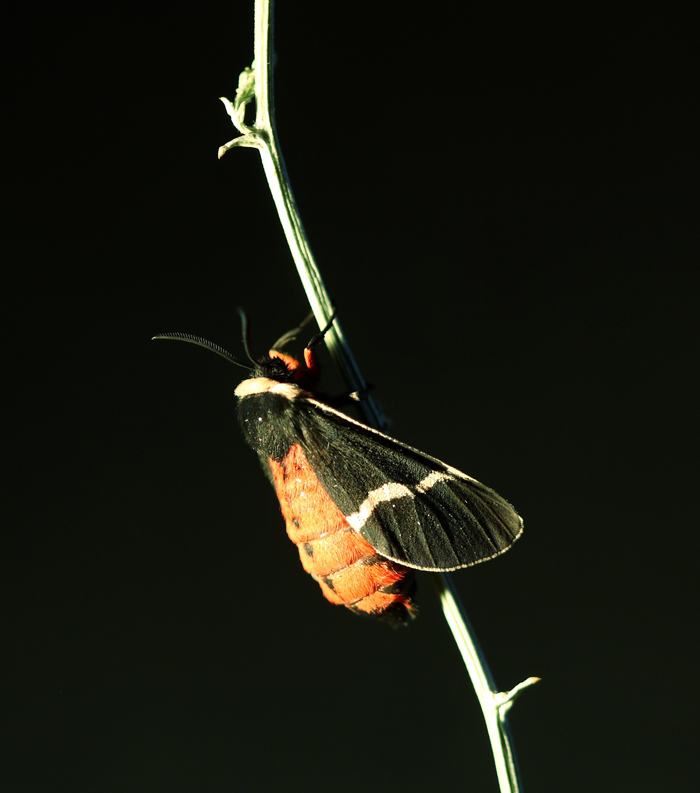
Par Chris Grinter, le 25 mai, 2010 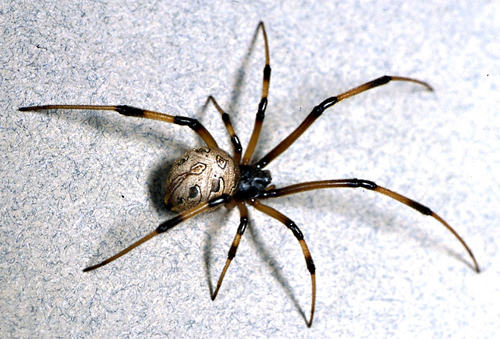
For those Californians reading, especially those in the south, keep an eye out for this beautiful little spider, Latrodectus geometricus – the brown widow. Arachnologists at UC Riverside are monitoring the spread of this invasive species. Ironically it turns out to not be as dangerous as our native black widow. Nonetheless, it is not from ’round these here parts (should be said in your best southern twang). If you find a specimen, especially if you’re not in LA/Orange/SD counties, you should contact the team at UCR.
Par Chris Grinter, le 25 mai, 2010 Avec la Corée est au bord d'une guerre chaude, une catastrophe écologique sans précédent de proportion et de troubles civils en Jamaïque (quelqu'un harshed leur moelleux) – pour n'en nommer que quelques-uns des gros titres d'aujourd'hui provenant d'autres sources – CNN prend le temps de gonfler sa première page.

Je reçois habituellement un peu excité quand je tombe sur des articles comme celui-ci parce que j'ai toujours l'espoir de quelque chose d'aussi ridicule il doit être discuté. Heureusement CNN est géré par des équipes de ouistitis ivres qui aiment jeter merde à nous. Avant le Moth époque sceptique que je voudrais partager des liens à la page de reportages sur les conclusions de bigfoot, chupacabra et les étrangers avec quelques amis, ou les dispersent dans facebook. Maintenant, je peux ridiculiser CNN sur un support de google archivé.
Je ne comprends pas le point de cet article. John Blake ne pas discuter d'une explication de ce phénomène, donner un avis, ou poser des questions. Bien sûr, il demande si Dieu se soucie vraiment qui gagne, mais cette question n'est plus valable que de demander si mon chien (aussi fictif) se soucie de ce genre de voiture que je conduis (à moins que bien sûr, il est psychique! Sérieusement…les gens croient ce). Quand je lis des articles comme celui-ci je me sens comme si je suis classement des documents dans une classe d'anglais au lycée. Il n'y a pas l'intégrité journalistique, opinion intelligente ou base factuelle pour le gribouillage – il ya juste de jolies images et des mots entre eux illustrant. Réglage de l'ensemble de la question de la prière et de la foi de côté; les athlètes ont toujours été connus pour leur superstitions (autre). Le “discours d'acceptation” phénomène s'inscrit sans aucun doute dans cette catégorie. Après avoir obtenu un résultat statistiquement petits (voir mains chaudes), ils ont peur de l'oubli de Dieu dans la crainte de perdre leur capacité magie (pas nécessairement consciemment). Pour une raison Blake retient cet article pour seuls sports – peut-être qu'il joue délibérément dans l'démographique massive de sports américains aimer, swilling bud-lumière, chrétiens – mais il s'agit clairement d'un thème récurrent. À toute cérémonie de remise des prix Dieu, Jésus ou Allah est généralement en haut de la liste de remerciements. Oubliez tout ce dur travail et le talent que vous pourriez avoir, c'était quelque chose ou quelqu'un d'autre. Abandonnant toute pensée rationnelle à un être mystique est une chose dangereuse. Cet état d'esprit est le même que celui qui permet aux toxicomanes à blâmer qu'eux-mêmes (même si la dépendance est en partie câblé), croire en guérison par la foi, déclencher une guerre sainte, ou laisser l'Eglise catholique blâmer le diable.
CNN clignote les lumières et en faisant tinter les touches sur le visage de leurs lecteurs. En général, je laisse le soin aux nouvelles FOX insulter mon intelligence, mais je suis heureux de savoir que j'ai un choix dans ce marché.
Par Chris Grinter, le 24 mai, 2010 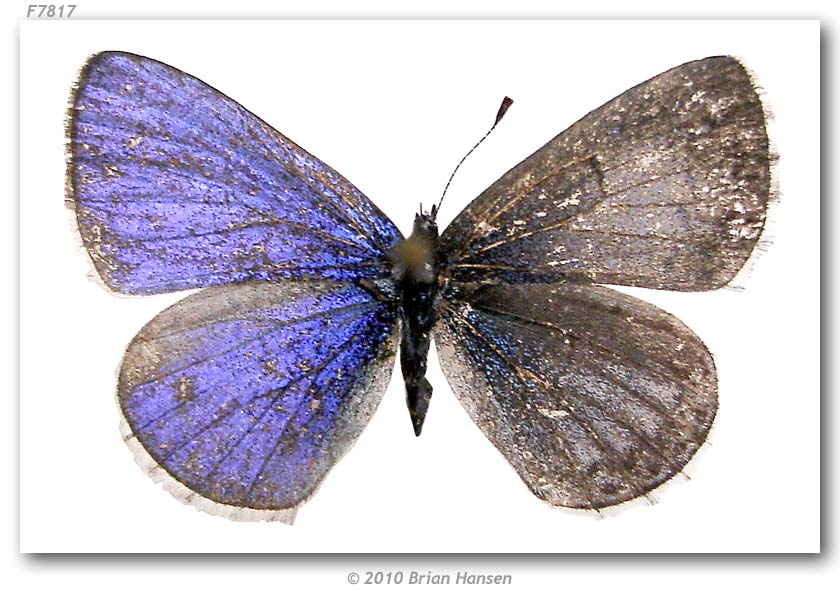
Une fois dans un événement de vie, un bilateral gynandromorph. En résumé, un petit problème lors de la différenciation cellulaire crée des modèles de chromosomes asymétriques, ce qui conduit à l'expression du sexe asymétrique dans l'insecte adulte. Si vous n'avez pas cliqué sur le lien ci-dessus, faire, c'est une excellente description avec des photos impressionnantes.
Retour au papillon. I was in the field this March just above the middle fork of the American River on the hunt for Xanthothrix, with me was Brian Hansen and Bob Patterson. Bob and I were on a mission, to locate a remote patch of Coreopsis high on serpentine soils, and to find our rare little moth. Brian came along to enjoy the day and explore the butterfly fauna. While Bob and I hiked ahead anxious to see if the days hike would be worth it, Brian stopped frequently to net passing leps. It was probably less than an hour out from the car when we hear form behind us on the trail “Hey guys… I think I just caught a gynandromorph!!!” D'accord, I was skeptical. Bob and I approached to see Brian holding a little blue in his hand, which unmistakably, was a bilateral gynandromorph. I was blown away. Bob has over 50 years of experience as an avid lepidopterist and has never seen one of these in the wild. To make this feat even more impressive, this small blue butterfly is one of the commonest insects in the American west in the spring. Aujourd'hui, they were puddling in great numbers along the trail, and I hadn’t even stopped to blink at one. Brian just netted a one in a million catch. Perhaps it is the curse of a jaded lepidopterist that will keep me from such once in a lifetime discovery; but I know I will be looking closer at even the commonest butterfly as it wings by me.
So as you can see the butterfly is exactly half male and half female (the right side is female). If you look very closely you can even see a perfect vertical line bisecting the body if the insect (looks like a photoshop edit almost), gynandromorphism after-all is expressed throughout the entire body and even the genitalia are contorted into strange shapes.
The specimen is in Brian Hansen’s personal collection, and you can find the images hosted on the Butterflies of America website.

Par Chris Grinter, le 23 mai, 2010 
Naturellement, il a été nommé drewsii de Phallus. Cela vient former la liste des haut 10 espèce mentionnée dans 2009, respecté par l'Arizona State University (pas une très bonne liste si 7 de mes nouvelles espèces n'étaient pas là-bas…). Alors que je tends à éviter phallique et O'Keeffesque botanique, celui-ci je ne pouvais pas résister, car il a été nommé d'après quelqu'un de ma propre institution. Dr. Robert Drewes a maintenant une petite champignons phallique qui porte son nom (avec la permission). Taxonomie humour au travail.
Par Chris Grinter, on May 18th, 2010 
Has just been posted over at Coléoptères dans le Bush. Go over and explore the latest moth carnival, a gathering of blogs that have featured moths in one way or another over the last month or so.
Par Chris Grinter, on May 18th, 2010 News in from India, a butterfly photographer has been kidnapped. A local park official who was visiting the north eastern province Arunachal Pradesh was taken at night by a gang of armed youth-rebels. Efforts to find him have been hampered by the weather and remote terrain. India has recently become one of the most difficult countries to conduct research in, and now we are all reminded of its continuing history of violence. Often it is within the remote and wild portions of a developing country that harbors both stunning biodiversity and militant dissidents. While in Ecuador my group kept an eye out for Columbian FARC rebels who may have strayed across the border; thankfully it was only a minute possibility they would be there in the first place, and nothing was seen. I think some of my most harrowing field work has been along the US-Mexican boarder states and in Mexico itself. Drug runners would rather shoot you before asking you to move out of their way, and roaming banditos were responsible for a murder of a colleagues friend in Oaxaca years ago. Sans surprise, the lure of untapped biodiversity keeps pulling us in. Stay safe in the field!
Par Chris Grinter, le 5 mai, 2010 Plus d'un long week-end, je serai sur le terrain. Restez à l'écoute pour des histoires incroyables (aucune exagération ici…).
Même si je suis loin de profiter de ce qui suit d'autres excellents blogueurs:
Continue reading Gone Collecting
Par Chris Grinter, le 5 mai, 2010 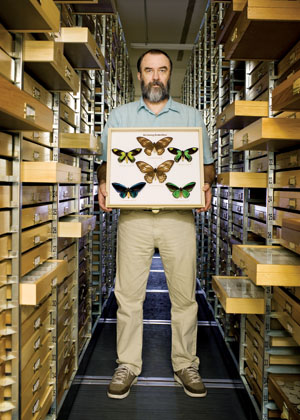 Il est bon de jeter un changeup chacun en temps, and this week here is an article that is actually GOOD. Oui, vous avez bien lu ici en premier, un positive article about entomology collections. We all need a breather after that Fox news fiasco with the Michigan State collection. The Honolulu Magazine does a really great job (hey… I knew that title sounded familiar… it’s a book by May Berenbaum) and they actually seem to get it. There are some great quotes from Dr. Neal Evenhuis (pictured) and Shepherd Myers; go read about the Bishop Museum’s collections and the awesomeness of being an entomologist on one of the most beautiful places in the world. En fait, Neal, need a curatorial assistant? Il est bon de jeter un changeup chacun en temps, and this week here is an article that is actually GOOD. Oui, vous avez bien lu ici en premier, un positive article about entomology collections. We all need a breather after that Fox news fiasco with the Michigan State collection. The Honolulu Magazine does a really great job (hey… I knew that title sounded familiar… it’s a book by May Berenbaum) and they actually seem to get it. There are some great quotes from Dr. Neal Evenhuis (pictured) and Shepherd Myers; go read about the Bishop Museum’s collections and the awesomeness of being an entomologist on one of the most beautiful places in the world. En fait, Neal, need a curatorial assistant?
Par Chris Grinter, le 4 mai, 2010
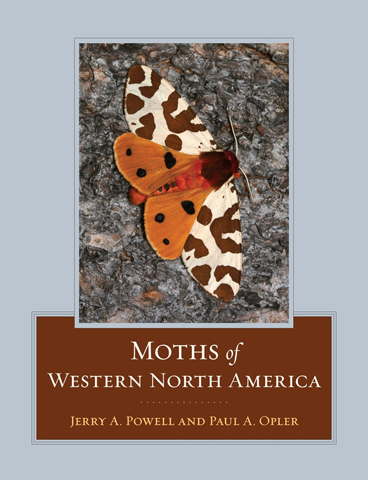
Pour ceux qui ne connaissent pas, un nouveau livre a frappé le marché à la fin de l'année dernière. “Le mites de l'Ouest Amérique du Nord“, Powell et Opler. A seulement $95 il vaut chaque cent (ou $75 pour le e-book, mais je déteste les livres électroniques). It’s a remarkable tome and the first of its kind for the western states. Not only is it a spectacular reference, but it sets the bar for all insect books. Aucun, not every moth in the west is in there (that would break my desk and wallet at over 6,000 espèce), but almost one of every genus and common or remarkable species has a photograph, life history and distribution. Most importantly it covers microlepidoptera. I grew up on the eastern counterpart, Moths of Eastern North America by Covell. I had two copies, one for the field and one for my desk – and had to replace the field copy at least once. It was a great book, but Powell and Opler have run laps around it.
The other good news is you can now access all 1,228 moth illustrations and corresponding data online for libre. Go to CalPhotos and search for Powell, ou click here. The nice part about this is the somewhat smaller microlep photos in the book are available in high-resolution for better identification. Beautiful addition to the reference and easier than sending everyone a CD.
|
Scepticisme
|









